
From the Director
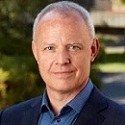
After a brief summer shutdown, SSRL restarted operations in early September, and began to gradually re-open beam lines to support mail-in/remote access work for research involving low-risk samples. We are working to define the path to allow in-person users back on site, taking into account the dynamic public health situation. We will continue to monitor and adapt to changing conditions onsite, in the surrounding communities, in our state and nationwide. The health and safety of our staff, users, students, and visitors remains our top priority. We will continue to provide updates.
Later in the month (September 28-October 9), we held the first ever virtual Users’ Meeting – which was highly successful with > 1,750 people registering to the meeting and to 22 separate workshop (see details later in this Newsletter).
– Paul McIntyre
Science Highlights
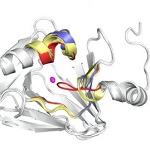
The Making of an Enzyme-in-Action Movie – Contact: Aimin Liu, University of Texas at San Antonio
The enzyme 3-Hydroxyanthranilate-3,4-dioxygenase (HAO) is critical for the metabolism of the amino acid tryptophan and the synthesis of the important coenzyme nicotinamide adenine dinucleotide (NAD+). Although the role of this enzyme has been long known, its mechanism and regulation have remained a mystery, because it is difficult to study. HAO creates the unstable product 2-amino-3-carboxymuconic semialdehyde (ACMS) that can self-cyclize into quinolinic acid (QUIN). Because excess amounts of QUIN have been implicated in neurologic diseases, HAO is a potential drug target. A group of scientists have determined the mechanism of the HAO enzyme by applying crystallographic techniques. Read more...
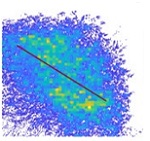
Mutual Modulation between Surface Chemistry and Bulk Microstructure within Secondary Particles of Nickel-rich Layered Oxides – Contacts: Yijin Liu (SSRL), Kejie Zhao (Purdue), Jun-Sik Lee (SSRL)
Lithium ion battery technology has made possible our most-used personal electronics. Improvements in lithium ion battery energy storage, which can lead to advancements in technologies like electric vehicles, depend largely on improvements to the cathode materials. Researchers value Ni-rich NMC (LiNixMnyCozO2; x+y+z ≈ 1, x ≥ y+z) layered oxide materials for their ability to achieve high energy density, but the performance can be limited due to aberrant surface reactions. Characterization these surface reactions and their relationship to the material’s structure will aid in improving NMC materials, but it is a difficult task, requiring new methods. A team of scientists have integrated new experimental tools for studying how the bulk microstructure and the surface chemistry the NMC cathode material are related and affect performance. Read more...
SSRL-Related Science and News
Stanford Physicist’s Quest for the Perfect Keys to Unlock the Mysteries of Superconductivity
Excerpt from Stanford News Article by Glennda Chui
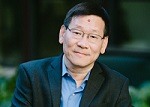
Zhi-Xun Shen vividly remembers his middle school physics teacher demonstrating the power of x-rays by removing a chunk of radioactive material from a jar stored in a cabinet, dropping it into a bucket and having students put their hands between the bucket and a phosphor screen to reveal the bones hidden beneath the skin and flesh.
That left an impression,” Shen recalled with a grin. Sometimes he wonders if that moment set the stage for everything that followed. Read more...
SLAC Researchers Join Effort to Make Plastic More Recyclable
Excerpt from SLAC News Article by Nathan Collins
Researchers at SSRL are joining the Bio-Optimized Technologies to Keep Thermoplastics out of Landfills and the Environment, or BOTTLE, consortium. Made up of researchers from several national labs and universities, the consortium is turning to biologically inspired chemistry and materials to make plastic recycling more cost effective — and ultimately tackle a pressing environmental issue.
“As humans, we were blind to the real problems of plastic waste,” said Simon Bare, a distinguished staff scientist SSRL who is working with SSRL scientists Chris Tassone and Ritimukta Sarangi to organize SLAC’s efforts with BOTTLE. Read more...
2020 SSRL/LCLS Users' Meeting Wrap-up
Our virtual SSRL/LCLS Annual Users’ Meeting attracted over 1,750 people who participated in a diverse program over two weeks of morning sessions that included 22 focused workshops, plenary sessions, 99 poster presentations, a town hall discussion, and SSRL and LCLS UEC meetings. The SSRL annual award winners presented their science during the Young Investigator Session on October 2:
Peter Chung, William E. and Diane M. Spicer Young Investigator Award (see Aug/Sep Headlines)
Kelly Summers, Melvin P. Klein Scientific Development Award (see more below)
Case van Genuchten, Farrel W. Lytle Award (see more below)
The following poster presenters were selected for the 2020 Joe Wong Outstanding Poster Awards:
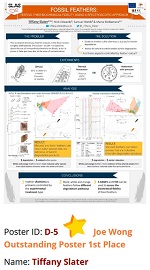
Tiffany Slater, Fossil feathers: testing their biochemical fidelity using a spectroscopic approach
Adrien Descamps, Direct temperature measurement of shock compressed Argon using the LCLS
Mia Lahey-Rudolph, Fixed-target serial femtosecond crystallography using micro crystals grown in living insect cells
This year the NSF-supported BioXFEL Science and Technology Center sponsored several student poster awards which were presented at the 2020 SSRL/LCLS Users' Meeting.
Isabel Bogacz, Molecular movie" of the S2 to S3 transition of Photosystem II using X-ray crystallography and spectroscopy
Ebru Destan, Near-Physiological-Temperature Serial Femtosecond X-ray Crystallography structure of SARS-CoV-2 Main Protease
Ethan Holleman, Polo: A GUI For High-Throughput Crystallization
Samantha Muellers, Deconvolution of structure-activity relationships of peptide inhibitors of the KEAP1/Nrf2 protein-protein
Our thanks to Joe Wong and Eddie Snell for their continuing support of our user program and promotion of excellent science through these poster awards.
See also: Slideshow: 2020 SSRL/LCLS Users’ Meeting
SSRL Users' Executive Committee Update
UEC Election Results
Election results for SSRL's Users' Executive Committee (UEC) are in. Please join us in supporting Eddie Snell as the new UEC Chair and Graham George as the Vice-Chair. We thank everyone who agreed to be nominated and extend a warm welcome to newly elected members: Liane Moreau, Simon George, Limei Zhang, Linda Vogt, Isabel Bogacz and Ailiena Maggiolo. It is also our pleasure to welcome Andrew Riscoe and Kelly Summers back to the SSRL UEC as representatives of the postdoc user community.
We would like to acknowledge the continuing contributions of Timothy Stemmler, who rotates from SSRL UEC Chair to Past Chair. Finally, we would like to express our thanks to retiring committee members David Bushnell, Henry La Pierre, Monica Barney, Natalie Geise, Nathan Lavey and Bor-rong (Hypo) Chen.
SSRL Annual Awards
Kelly Summers Wins 2020 Klein Award for Research on Treatments for Alzheimer’s Disease
Excerpt from SLAC News article by Caitlyn Buongiorno
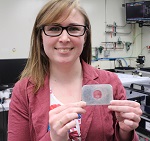
Kelly L. Summers, a PhD student from the University of Saskatchewan, became interested in the important roles that metals play in the body during her third year of undergraduate school. For instance, she points out, iron is crucial in helping to bind oxygen in blood. Currently, her research focuses on investigating the role copper plays in Alzheimer’s disease.
“It was a project presented to me when I was first starting my PhD, and the potential impact really spoke to me,” Summers says. “Every time I’ve presented this work, there’s always been someone who comes up to me afterwards and mentions how they or someone they know have been impacted by the disease.”
Summers has been selected to receive the 2020 Melvin P. Klein Scientific Development Award for her research on not only the role of copper in the brain, but also potential candidate drugs for the treatment of Alzheimer’s disease. Read more...
Case van Genuchten Wins 2020 Farrel W. Lytle Award for Drinking Water Treatment Research
Excerpt from SLAC News Article by Niba Audrey Nirmal
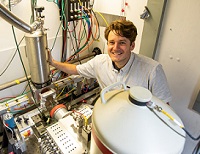
Case van Genuchten, researcher of the Geological Survey of Denmark and Greenland and longtime user of the Stanford Synchrotron Radiation Lightsource (SSRL) at DOE’s SLAC National Accelerator Laboratory, won the 2020 Farrel W. Lytle Award for designing technologies to remove toxic chemicals from groundwater.
“This award validates my approach of applying molecular scale techniques to study drinking water treatment problems, which I started 10 years ago as a PhD student,” van Genuchten said.
Launched in 1998, the award has been given to 23 scientists from around the world. Nominees are evaluated based on their contributions and accomplishments in using synchrotron radiation-based science. Read more...
Events
- First Stanford Electron Microscopy-X Symposium, Monday, Nov. 2, 2020, 8:00–9:30 AM Pacific time.
- Professor Jacques Dubochet (2017 Nobel Laureate in Chemistry), University of Lausanne
Talk title "A Nobel prize, how and what for?" - Professor Yi Cui (2017 Blavatnik Laureate in Physical Sciences and Engineering), Stanford University
Talk title "Cryo and in-situ electron microscopy for clean energy"
- Professor Jacques Dubochet (2017 Nobel Laureate in Chemistry), University of Lausanne
- LCLS Workshop on Non-Linear Multidimensional Methodologies for Studying Chemical Sciences, Dec 9–10, 2020
See website for registration and agenda -
U.S. Particle Accelerator School to be held online, January/February 2021
Visit USPAS site for full details and an application form.
Announcement
2021 Panofsky Fellowship at the SLAC National Accelerator Laboratory (SLAC) Call for Applications – Deadline for submission is November 2, 2020
The Panofsky Fellowship honors SLAC National Accelerator Laboratory’s founder and first Director, Wolfgang K. H. Panofsky. It is intended to recognize exceptional and promising young scientists who would most benefit from the unique opportunity to conduct their research at SLAC National Accelerator Laboratory. Candidates should be early in their career but have demonstrated experience at the postdoctoral level with clear potential for exceptional scholarship, breadth, innovation, and leadership. The candidate's research plan should encompass one or more areas within the general scope of the science program at SLAC:
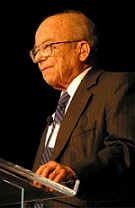
- Accelerator science and advanced accelerator research
- Applied energy research
- Biosciences
- Chemical sciences
- Computer science
- Elementary particle physics (experiment and theory)
- High energy density matter
- Materials and condensed matter science
- Particle astrophysics and cosmology
- X-ray science, including ultrafast science and advanced x-ray instrumentation, at LCLS and SSRL
For more information, please consult the Panofsky Fellowship page.
User Research Administration
Proposal Deadlines
- Xray/VUV – November 1, 2020
- Macromolecular Crystallography – December 1, 2020
- COVID-19 related proposals for beam time at SSRL and microscope time at our CryoEM facility can be submitted at any time and will be reviewed expeditiously.
- CryoEM biology-related proposals for the S2C2 program can be submitted at any time through the end of 2020. Proposals will be reviewed on a monthly basis.
Beam time Requests for our next cycle are due November 1 for Xray/VUV and November 16 for Macromolecular Crystallography.
Submit beam time requests and proposals through the User Portal. Questions can be directed to the SSRL User Office or the CryoEM User Office
The Stanford Synchrotron Radiation Lightsource (SSRL) is a third-generation light source producing extremely bright x-rays for basic and applied research. SSRL attracts and supports scientists from around the world who use its state-of-the-art capabilities to make discoveries that benefit society. SSRL, a U.S. DOE Office of Science national user facility, is a Directorate of SLAC National Accelerator Laboratory, operated by Stanford University for the U.S. Department of Energy Office of Science. The SSRL Structural Molecular Biology Program is supported by the DOE Office of Biological and Environmental Research, and by the National Institutes of Health, National Institute of General Medical Sciences. For more information about SSRL science, operations and schedules, visit http://www-ssrl.slac.stanford.edu.
To unsubscribe from SSRL Headlines, just send an e-mail to listserv@slac.stanford.edu with "signoff ssrl-headlines" in the body.
To subscribe, send an e-mail to with "subscribe ssrl-headlines" in the body.
Questions? Comments? Contact Lisa Dunn




